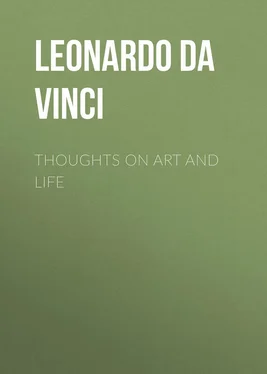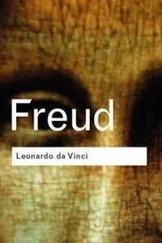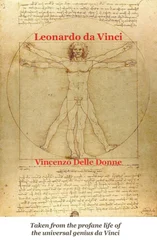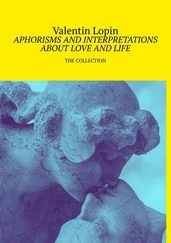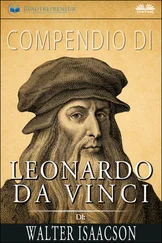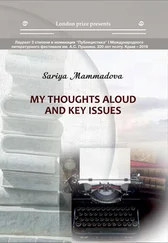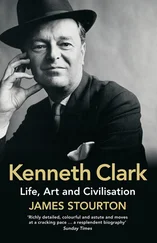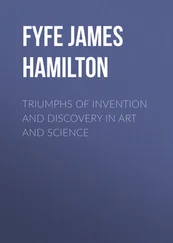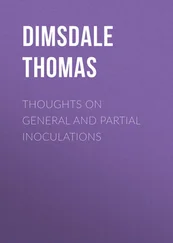Leonardo da Vinci - Thoughts on Art and Life
Здесь есть возможность читать онлайн «Leonardo da Vinci - Thoughts on Art and Life» — ознакомительный отрывок электронной книги совершенно бесплатно, а после прочтения отрывка купить полную версию. В некоторых случаях можно слушать аудио, скачать через торрент в формате fb2 и присутствует краткое содержание. Жанр: foreign_home, visual_arts, foreign_antique, foreign_prose, на английском языке. Описание произведения, (предисловие) а так же отзывы посетителей доступны на портале библиотеки ЛибКат.
- Название:Thoughts on Art and Life
- Автор:
- Жанр:
- Год:неизвестен
- ISBN:нет данных
- Рейтинг книги:4 / 5. Голосов: 1
-
Избранное:Добавить в избранное
- Отзывы:
-
Ваша оценка:
- 80
- 1
- 2
- 3
- 4
- 5
Thoughts on Art and Life: краткое содержание, описание и аннотация
Предлагаем к чтению аннотацию, описание, краткое содержание или предисловие (зависит от того, что написал сам автор книги «Thoughts on Art and Life»). Если вы не нашли необходимую информацию о книге — напишите в комментариях, мы постараемся отыскать её.
Thoughts on Art and Life — читать онлайн ознакомительный отрывок
Ниже представлен текст книги, разбитый по страницам. Система сохранения места последней прочитанной страницы, позволяет с удобством читать онлайн бесплатно книгу «Thoughts on Art and Life», без необходимости каждый раз заново искать на чём Вы остановились. Поставьте закладку, и сможете в любой момент перейти на страницу, на которой закончили чтение.
Интервал:
Закладка:
da Vinci Leonardo
Thoughts on Art and Life
INTRODUCTION
The long obscurity of the Dark Ages lifted over Italy, awakening to a national though a divided consciousness. Already two distinct tendencies were apparent. The practical and rational, on the one hand, was soon to be outwardly reflected in the burgher-life of Florence and the Lombard cities, while at Rome it had even then created the civil organization of the curia. The novella was its literary triumph. In art it expressed itself simply, directly and with vigour. Opposed to this was the other great undercurrent in Italian life, mystical, religious and speculative, which had run through the nation from the earliest times, and received fresh volume from mediaeval Christianity, encouraging ecstatic mysticism to drive to frenzy the population of its mountain cities. Umbrian painting is inspired by it, and the glowing words of Jacopone da Todi expressed in poetry the same religious fervour which the life of Florence and Perugia bore witness to in action.
Italy developed out of the relation and conflict of these two forces the rational with the mystical. Their later union in the greater men was to form the art temperament of the Renaissance. The practical side gave it the firm foundation of rationalism and reality on which it rested; the mystical guided its endeavour to picture the unreal in terms of ideal beauty.
The first offspring of this union was Leonardo. Since the decay of ancient art no painter had been able to fully express the human form, for imperfect mastery of technique still proved the barrier. Leonardo was the first completely to disengage his personality from its constraint, and make line express thought as none before him could do. Nor was this his only triumph, but rather the foundation on which further achievement rested. Remarkable as a thinker alone, he preferred to enlist thought in the service of art, and make art the handmaid of beauty. Leonardo saw the world not as it is, but as he himself was. He viewed it through the atmosphere of beauty which filled his mind, and tinged its shadows with the mystery of his nature. To all this, his birthright as a painter, a different element was added. A keen desire for knowledge, guiding his action in life, spurred him onward. Conscious of this dominant impulse, he has fancifully described himself in a Platonic allegory. He had passed beneath overhanging cliffs on his way to a great cavern. On bended knees, peering through its darkness, fear and desire had overwhelmed him, – fear for the menacing darkness of the cavern; and desire to ascertain if there were wonders therein.
From his earliest years, the elements of greatness were present in Leonardo. But the maturity of his genius came unaffected from without. He barely noticed the great forces of the age which in life he encountered. After the first promise of his boyhood in the Tuscan hills, his youth at Florence had been spent under Verrocchio as a master, in company with those whose names were later to brighten the pages of Italian art. He must then have heard Savonarola's impassioned sermons, yet, unlike Botticelli, remained dumb to his entreaties. He must have seen Lorenzo the Magnificent. But there was little opening in the Medicean circle for the young painter, who had first to gain fame abroad. The splendour of Milan under Il Moro, then the most brilliant court in Europe, attracted him. He went there, proclaiming his ability, in a remarkable letter, to accomplish much, but desiring chiefly to erect a great monument to the glory of the Sforza. He spent years at that court, taken up by his different ventures, – painting, sculpture, engineering, even arranging festivities – but his greater project was doomed to failure, enmeshed in the downfall of Ludovico. Even to this he remained impassive. "Visconti dragged to prison, his son dead, … the duke has lost his state, his possessions, his liberty, and has finished nothing he undertook," was his only comment on his patron's end, written on the margin of a manuscript. After the overthrow of the Duke of Milan, began his Italian wanderings. At one time he contemplated entering the service of an Oriental prince. Instead, he entered that of Caesar Borgia, as military engineer, and the greatest painter of the age became inspector of a despot's strongholds. But his restless nature did not leave him long at this. Returning to Florence he competed with Michelangelo; yet the service of even his native city could not retain him. His fame had attracted the attention of a new patron of the arts, prince of the state which had conquered his first master. In this his last venture, he forsook Italy, only to die three years later at Amboise, in the castle of the French king.
The inner nature of Leonardo remained as untouched by the men he encountered as by the events which were then stirring Europe. Alone, he influenced others, remaining the while a mystery to all. The most gifted of nations failed to understand the greatest of her sons. Isabella d'Este, the first lady of her time, seeking vainly to obtain some product of his brush, was told that his life was changeful and uncertain, that he lived for the day, intent only on his art. His own thoughts reveal him in another light. "I wish to work miracles," he wrote. And elsewhere he exclaimed, "Thou, O God, sellest us all benefits, at the cost of our toil… As a day well spent makes sleep seem pleasant, so a life well employed makes death pleasant. A life well spent is long."
Leonardo's views of aesthetic are all important in his philosophy of life and art. The worker's thoughts on his craft are always of interest. They are doubly so when there is in them no trace of literary self-consciousness to blemish their expression. He recorded these thoughts at the instant of their birth, for a constant habit of observation and analysis had early developed with him into a second nature. His ideas were penned in the same fragmentary way as they presented themselves to his mind, perhaps with no intention of publishing them to the world. But his ideal of art depended intimately, none the less, on the system he had thrown out seemingly in so haphazard a manner. His method gives to his writings their only unity. It was more than a method: it was a permanent expression of his own life, which aided him to construct a philosophy of beauty characteristic of the new age.
He had searched to find a scientific basis for art, and discovered it in the imitation of nature, based on rational experience. This idea was, in part, Aristotelian, imbibed with the spirit of the time; though in the ordinary acceptance of the word Leonardo was no scholar, least of all a humanist. His own innovation in aesthetic was in requiring a rational and critical experience as a necessary foundation, the acquisition of which was to result from the permanent condition of the mind. He had trained his own faculties to critically observe all natural phenomena: first try by experience, and then demonstrate why such experiment is forced to operate in the way it does, was his advice. The eye, he gave as an instance, had been defined as one thing; by experience, he had found it to be another.
But by imitation in art, Leonardo intended no slavish reproduction of nature. When he wrote that "the painter strives and competes with nature," he was on the track of a more Aristotelian idea. This he barely developed, using nature only partly in the Stagirite's sense, of inner force outwardly exemplified. The idea of imitation, in fad, as it presented itself to his mind, was two-fold. It was not merely the external reproduction of the image, which was easy enough to secure. The real difficulty of the artist lay in reflecting inner character and personality. It was Leonardo's firm conviction that each thought had some outward expression by which the trained observer was able to recognize it. Every man, he wrote, has as many movements of the body as of varieties of ideas. Thought, moreover, expressed itself outwardly in proportion to its power over the individual and his time of life. By thus employing bodily gesture to represent feeling and idea, the painter could affect the spectator whom he placed in the presence of visible emotion. He maintained that art was of slight use unless able to show what its subject had in mind. Painting should aim, therefore, to reproduce the inner mental state by the attitude assumed. This was, in other words, a natural symbolism, in which the symbol was no mere convention, but the actual outward projection of the inner condition of the mind. Art here offered an equation of inward purpose and outward expression, neither complete without the other.
Читать дальшеИнтервал:
Закладка:
Похожие книги на «Thoughts on Art and Life»
Представляем Вашему вниманию похожие книги на «Thoughts on Art and Life» списком для выбора. Мы отобрали схожую по названию и смыслу литературу в надежде предоставить читателям больше вариантов отыскать новые, интересные, ещё непрочитанные произведения.
Обсуждение, отзывы о книге «Thoughts on Art and Life» и просто собственные мнения читателей. Оставьте ваши комментарии, напишите, что Вы думаете о произведении, его смысле или главных героях. Укажите что конкретно понравилось, а что нет, и почему Вы так считаете.
